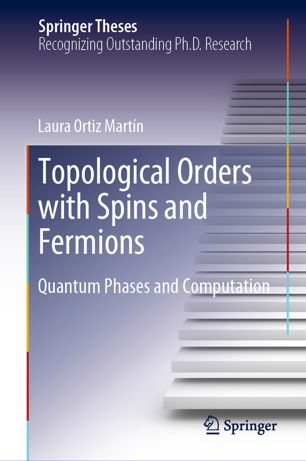

Most ebook files are in PDF format, so you can easily read them using various software such as Foxit Reader or directly on the Google Chrome browser.
Some ebook files are released by publishers in other formats such as .awz, .mobi, .epub, .fb2, etc. You may need to install specific software to read these formats on mobile/PC, such as Calibre.
Please read the tutorial at this link: https://ebookbell.com/faq
We offer FREE conversion to the popular formats you request; however, this may take some time. Therefore, right after payment, please email us, and we will try to provide the service as quickly as possible.
For some exceptional file formats or broken links (if any), please refrain from opening any disputes. Instead, email us first, and we will try to assist within a maximum of 6 hours.
EbookBell Team

5.0
40 reviewsThis thesis deals with topological orders from two different perspectives: from a condensed matter point of view, where topological orders are considered as breakthrough phases of matter; and from the emerging realm of quantum computation, where topological quantum codes are considered the most appealing platform against decoherence. The thesis reports remarkable studies from both sides. It thoroughly investigates a topological order called the double semion model, a counterpart of the Kitaev model but exhibiting richer quasiparticles as excitations. A new model for symmetry enriched topological order is constructed, which adds an onsite global symmetry to the double semion model. Using this topological phase, a new example of topological code is developed, the semion code, which is non-CSS, additive, non-Pauli and within the stabiliser formalism.
Furthermore, the thesis analyses the Rashba spin-orbit coupling within topological insulators, turning the helical edge states into generic edges modes with potential application in spinstronics. New types of topological superconductors are proposed and the novel properties of the correspondingly created Majorana fermions are investigated. These Majorana fermions have inherent properties enabling braiding and the performance of logical gates as fundamental blocks for a universsal quantum computator.